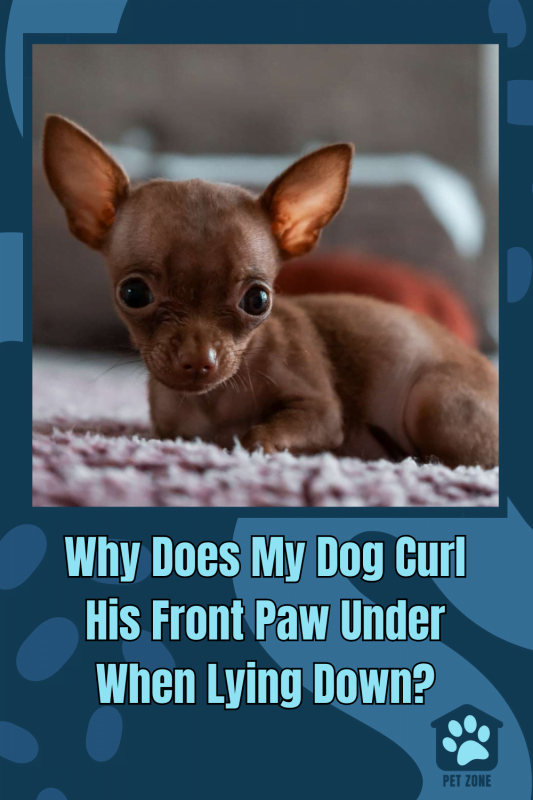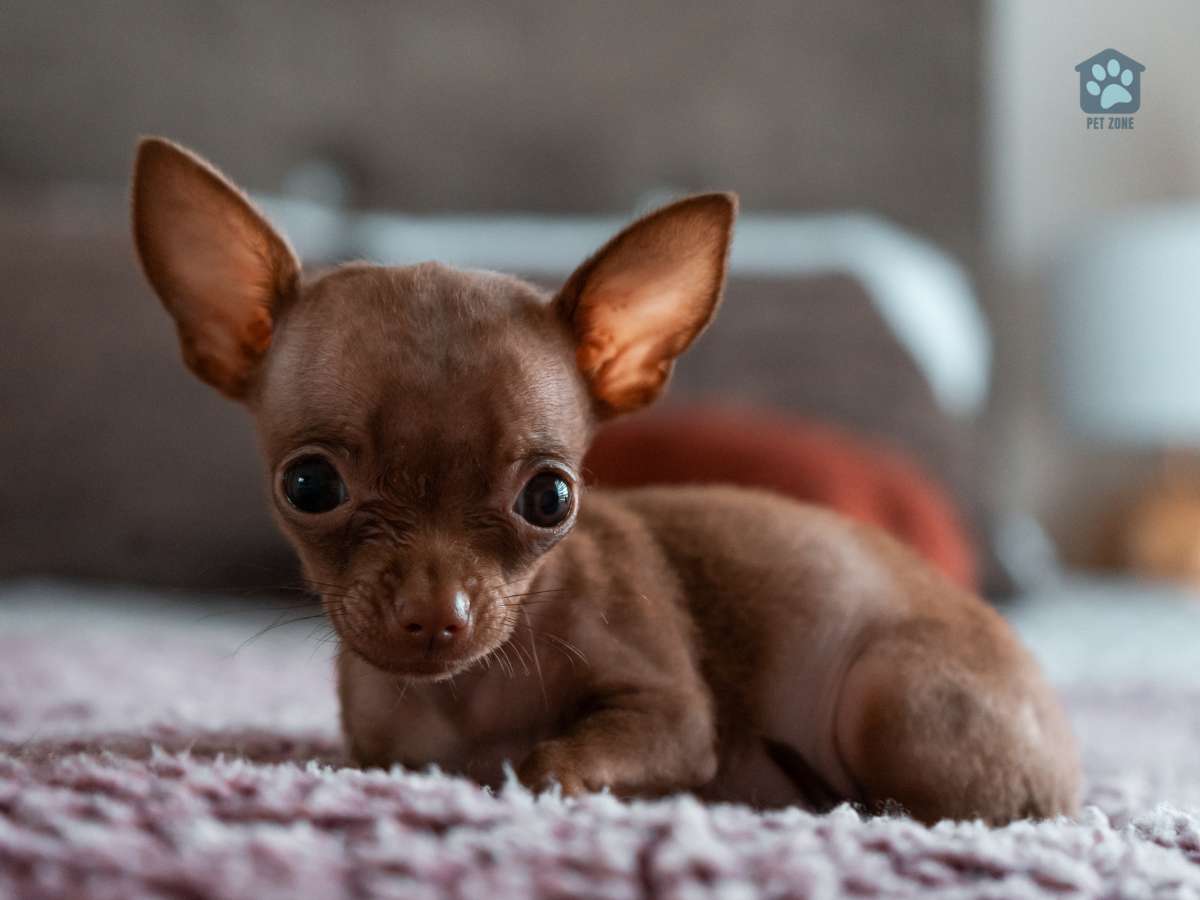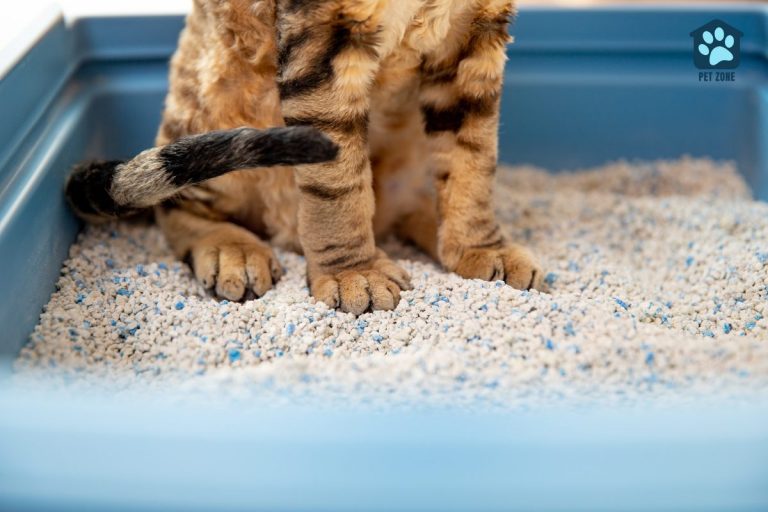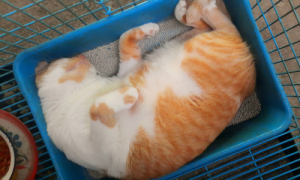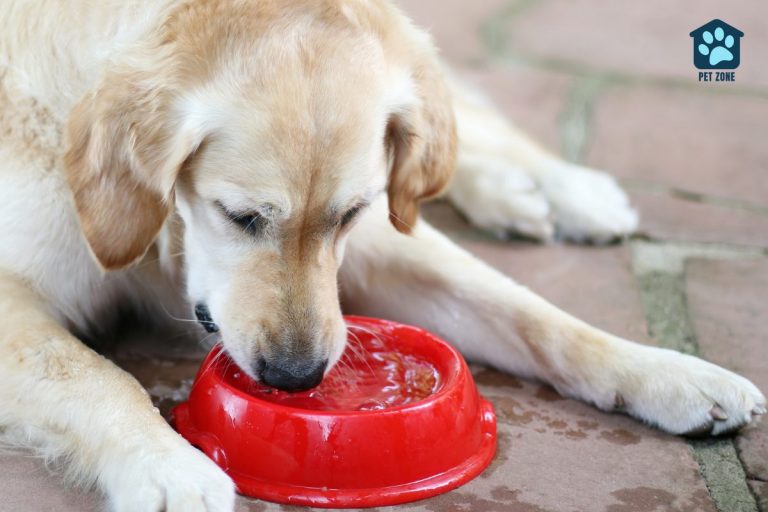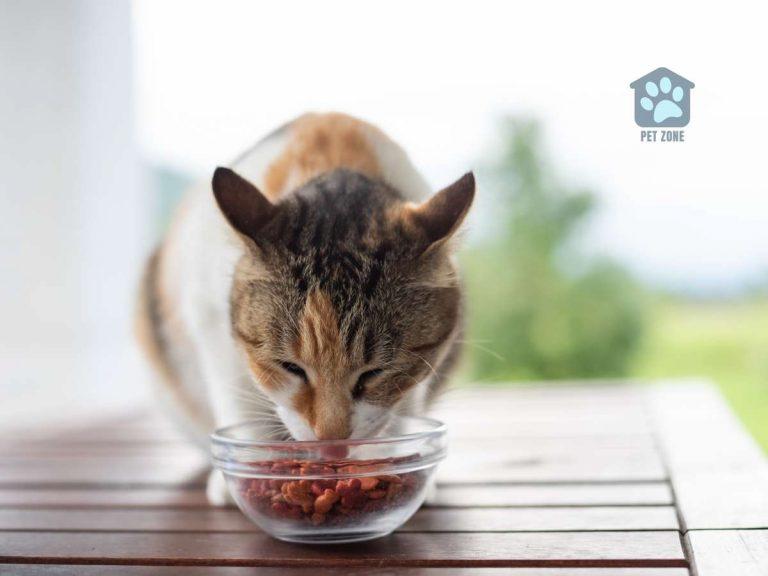Estimated reading time: 11 minutes
Have you ever noticed your dog’s front paw curled under when lying down and wondered why? This is a common behavior seen in many dogs, often signaling comfort or contentment–but sometimes it could be a sign of discomfort or underlying health issues.
Stick around to gain insightful pro tips on keeping your pup cozy, comfortable, and happy!
Key Takeaways
- Canines tuck their front paw under when lying down to keep warm and cozy, as it helps retain body heat.
- It can also be a sign of discomfort or pain, which could be caused by physical trauma, long nails growing into the paw pads, genetic disorders, or neurological diseases.
- To help your dog feel more comfortable when curling their paws, you can check for injuries, determine if they are in pain or discomfort, encourage exercise to alleviate any discomfort, massage their paws, provide soft bedding, offer toys for distraction, ensure a comfortable and secure environment. Consulting a veterinarian may also be necessary.
Reasons Why Dogs Curl Their Front Paw Under When Lying Down
Dogs are known to bend their front paws when lying down for various reasons:
To keep warm and cozy
Dogs curl their paws under when they sleep. This makes them feel warm and cozy. Their body heat stays close to them that way. They tuck their nose under their tail, too. This helps keep in even more warmth. It also keeps key organs safe from harm. So, it’s not just about comfort – it’s smart, too!
Discomfort or pain from physical trauma or injury
Your dog may curl his front paw under when lying down if he is hurt. This can happen due to an injury or physical trauma. Something sharp might have cut your pup’s paw. It could be a small stone stuck between the toes of your furry friend too.
Dogs also show this sign if they have pain in their joints or muscles from lying down for long periods. This happens more often in older dogs, as injuries take longer to heal with age. Arthritis might make your dog feel pain too.
Long nails growing into the paw pads
Long nails on dogs can be a problem. If the nails get too long, they may curl into the paw pads. This can be very painful for your dog and might even lead to an infection. Checking a pup’s nails often helps catch this issue early on.
Are you looking for a safe and easy solution for your pet’s claws or nails? Check out our recommended nail grinder!
These electric, cordless dog nail clippers are built with an advanced diamond bit grinder that delivers superior control and precision. Noise levels are very low below 50 decibels and the gentle vibration does not startle pets.
As a U.S. company, they firmly stand by the lasting quality of their products. If you're not 100% satisfied, please contact their customer service team.
- Safe and easy
- Great for home and professional use
- Portable, lightweight and smart design
If you see that the claws are growing towards the paw pads, it is time to trim them right away! Not all dogs enjoy getting their nails cut, but it’s an important part of keeping them healthy and pain-free.
Genetic disorders or neurological disease
Some dogs may curl their front paw under when lying down due to genetic disorders or neurological diseases. These conditions can affect the dog’s nerves, causing them to have difficulty properly placing their paws.
For example, intervertebral disc disease is a common neurological problem that can lead to knuckling in dogs. Dogs with genetic disorders or neurological diseases may also exhibit other symptoms such as stumbling, lack of balance or coordination, and uncoordinated movements.
It’s important to consult a veterinarian if you notice these signs in your dog, as they will be able to provide a proper diagnosis and treatment plan based on your pet’s specific condition.
Possible indications of anxiety or fear
If you notice your dog curling their front paw under when lying down, it could be a sign of anxiety or fear. Dogs may do this to make themselves feel smaller and less threatening. Other signs of anxiety or fear in dogs include rapid pacing, whining or panting, raised fur on the back, and dilated pupils.
It’s important to pay attention to these signals and create a calm and secure environment for your dog.
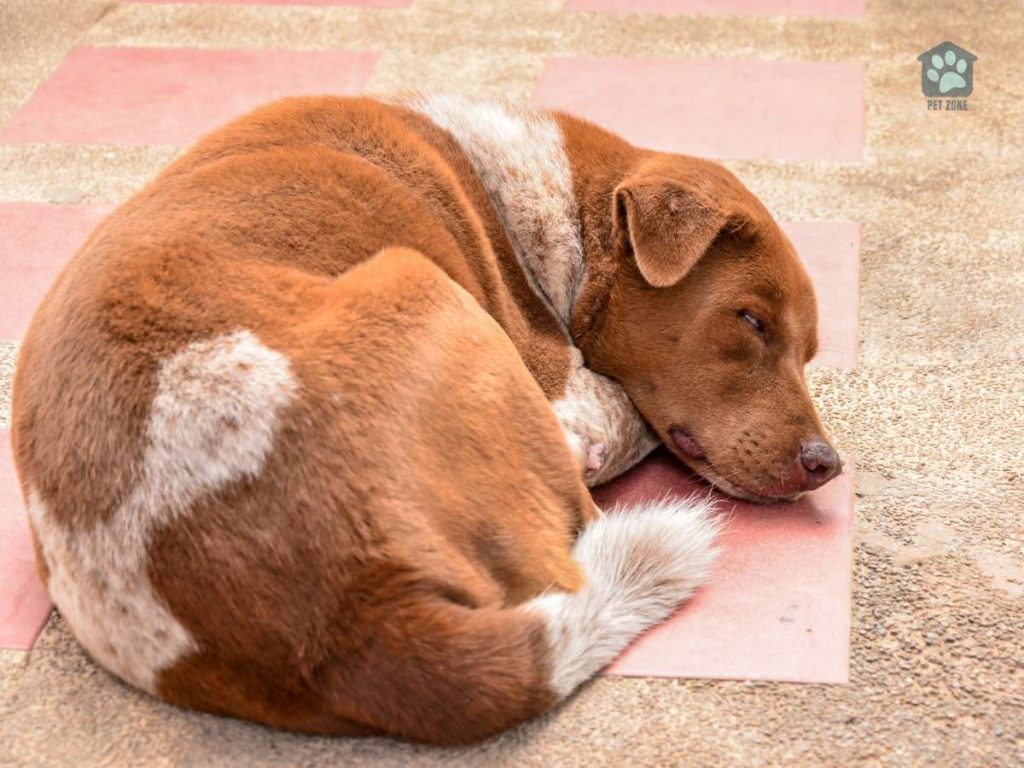
How to Help Your Dog Feel More Comfortable When Curling Their Paws
To help your dog feel more comfortable when curling their paws, you can check for injuries, determine if they are experiencing pain or discomfort, encourage exercise to alleviate any discomfort, massage their paws, provide soft bedding, offer toys for distraction, ensure a comfortable and secure environment, and consult a veterinarian if necessary.
Checking for injuries
To ensure your dog’s comfort, it’s important to check for any injuries that may be causing paw curling. Here are some steps you can take:
- Gently examine your dog’s paws for any cuts, scrapes, or foreign objects like thorns or splinters.
- Look for signs of swelling or tenderness in the paw area.
- Check if any broken nails could be causing discomfort.
- Pay attention to any changes in your dog’s gait or limping, which may indicate a more serious injury.
- If you notice anything unusual or concerning, it’s best to consult with a veterinarian for further examination and treatment.
How to determine if your dog is in pain or discomfort
You can tell if your dog is in pain or discomfort by looking for certain signs. These signs include:
- Restlessness or a change in sleeping habits: If your dog is having trouble getting comfortable and is constantly shifting positions, it could be a sign of pain.
- Uncharacteristic aggression: If your dog suddenly becomes aggressive or snaps at you when they normally wouldn’t, it may be due to pain.
- Curling their paws under when lying down: Dogs may curl their front paw under or tuck their back legs in when they are in pain.
- Vocalization: Whining, whimpering, yelping, growling, or howling can all be signs that your dog is experiencing discomfort.
- Decrease in social interaction or change in behavior: If your dog starts isolating themselves more or acts differently than usual, it could be a sign of pain.
Encouraging exercise to alleviate discomfort
Regular exercise can help alleviate discomfort in dogs who curl their front paw under when lying down. Here are some ways you can encourage exercise for your furry friend:
- Take daily walks: Going for walks is not only great exercise, but it also helps improve joint mobility and muscle strength.
- Play fetch: Engaging in a game of fetch can be an excellent way for your dog to get some exercise and stretch their muscles.
- Provide puzzle toys: Puzzle toys that require your dog to work for treats or food can keep them mentally stimulated while also encouraging physical activity.
- Try swimming: Swimming is a low-impact exercise that is easy on the joints while still providing a good workout. If your dog enjoys water, consider taking them for a swim.
- Set up an obstacle course: Constructing a simple obstacle course in your backyard can provide mental and physical stimulation for your dog as it navigates through it.
Massaging their paws
Massaging your dog’s paws can bring them comfort and relaxation. Here are some reasons why it can help:
- Massaging their paws can relax the muscles and ligaments in the paws and toes, promoting better flexibility and reducing any tension.
- It can stimulate blood flow to the area, which can help with healing and reduce inflammation if there is any discomfort or injury.
- Massaging their paws can also provide sensory stimulation, which may be soothing for dogs who are anxious or stressed.
- Additionally, it creates a bonding experience between you and your furry friend, helping to strengthen your relationship.
Providing soft bedding
Soft bedding is essential for ensuring your dog’s comfort when they curl their paws under while lying down. Here are some reasons why providing soft bedding can make a difference:
- Comfort: Soft bedding, such as blankets or dog beds, provides a cozy and cushioned surface for your dog to rest on. It helps alleviate pressure on their joints and prevents discomfort that can arise from lying on hard surfaces.
- Warmth: Soft bedding helps keep your dog warm, especially during colder months or if they have short fur. It acts as insulation, retaining their body heat and preventing them from feeling cold.
- Security: Dogs often feel more secure when they have a designated spot to lie down on. Soft bedding creates a comfortable and familiar environment, making them feel safe and relaxed.
- Hygiene: By providing soft bedding, you create a barrier between your dog and the floor, reducing contact with dirt, allergens, or potential parasites. It also makes it easier to clean any accidents or spills that may occur.
- Prevention of sores: If your dog spends a lot of time lying down or has bony prominences, such as elbows or hips, soft bedding can help prevent the development of pressure sores by distributing weight more evenly.
Check out our recommendation for a comfortable, easy-to-clean dog bed mattress!
This classic pet bed mattress design gives your fluffy friend plenty of room to sprawl out and get cozy in any position. Easy to carry and ideal for use indoors and outside, in a crate, in your car, or wherever life takes you.
Featuring an easy-to-remove, durable, and stain-resistant cover that makes deep cleaning a breeze. Simply machine wash and tumble dry.
- Orthopedic Support
- Pet-Safe Materials
- Easy Care Removable Cover
Offering toys for distraction
To help your dog feel more comfortable when curling their paws, you can offer toys for distraction. This can divert their attention and provide them with mental and physical stimulation. Here are some ways toys can be helpful:
- Toys can prevent the dog from appearing threatening or anxious.
- Offering toys as a distraction can divert their attention from curling their paws.
- Walking the dog in the opposite direction while holding a toy can help redirect their focus.
- Playing with interactive toys that dispense treats or engage the dog’s senses can keep them occupied and reduce paw curling.
- Squeaky toys or puzzle toys that require problem – solving skills can keep your dog mentally stimulated, preventing unwanted behaviors like paw curling.
Ensuring a comfortable and secure environment
To help your dog feel more comfortable when curling their paws, it’s important to provide them with a comfortable and secure environment. Here are some tips:
- Create a cozy space for your dog to relax in, such as a soft bed or blanket.
- Make sure the room temperature is appropriate for your dog’s comfort.
- Provide a safe and quiet space where your dog can retreat to if they feel anxious or overwhelmed.
- Remove any potential hazards or objects that could cause discomfort or injury.
- Establish a routine and stick to it, as dogs thrive on structure and predictability.
- Spend quality time with your dog, offering them plenty of love, attention, and affection.
- Avoid sudden loud noises or other stress-inducing stimuli that may make your dog feel uneasy.
Consulting a veterinarian if necessary
If you notice that your dog is curling their front paw under when lying down, it’s important to consult a veterinarian if necessary. A vet can help determine the underlying cause of this behavior and recommend appropriate treatment options.
They might perform a physical examination, conduct diagnostic tests, or ask about any other symptoms your dog may be experiencing. Early intervention is key to improving your dog’s comfort and mobility, so don’t hesitate to reach out to a professional for guidance.
They may suggest mobility aids, physical therapy exercises, medication, or even surgery depending on the specific issue causing the paw curling behavior. Remember that consulting with a veterinarian is essential in addressing and resolving any potential health concerns for your furry friend.
Causes of Knuckling in Dogs
Your dog could be knuckling if he starts to drag their paws while walking. Instead of placing his paw flat on the ground, he rolls it under and walks on the top of his toes. Imagine if you walked on the tops of your shoes instead of the soles—that’s what knuckling looks like in dogs. This behavior can make walking hard for your furry friend and may lead to scrapes or injuries on their paws.
So what causes knuckling? Sometimes it happens because of a nerve problem. Injuries or diseases can damage the nerves that control the paws. Another cause is muscle weakness. If your dog’s muscles aren’t strong enough, they can’t hold the paw in the right position.
Arthritis or joint problems can also make knuckling worse. These issues can make it painful for your dog to walk in the correct way. Lastly, some puppies knuckle because they are still growing and learning to walk properly. So if you notice your dog knuckling, it’s crucial to consult a vet to find out what’s going on.
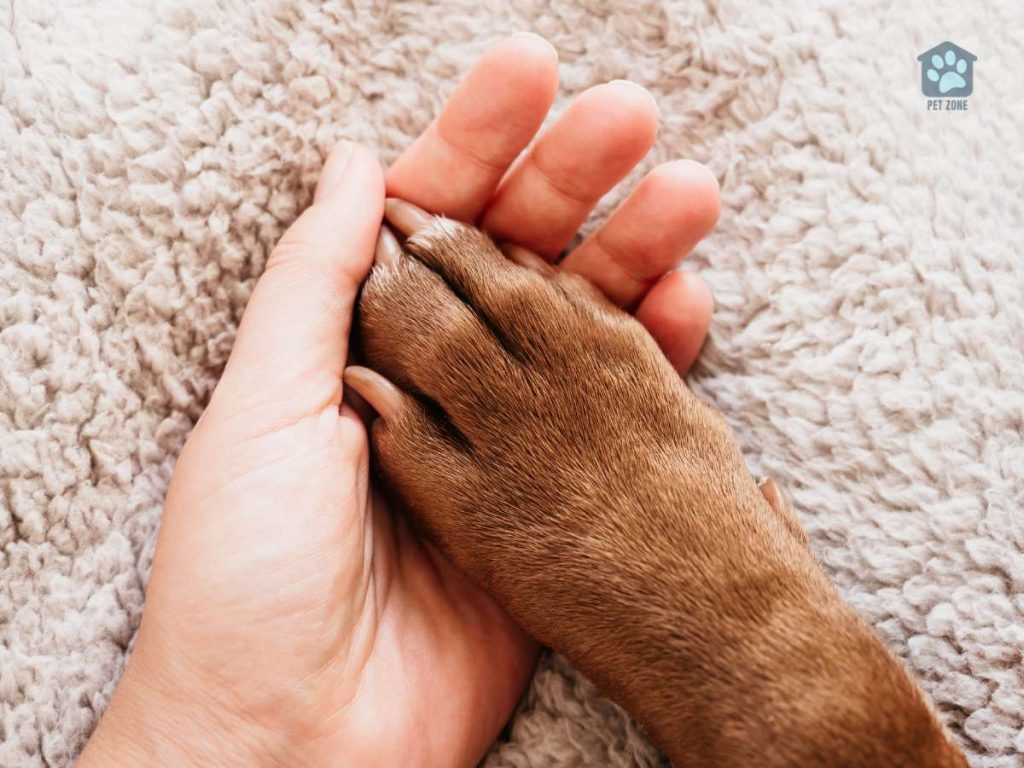
Conclusion
In conclusion, dogs curl their front paws under when lying down for various reasons. It can be a way to keep warm and cozy, but it can also indicate discomfort or pain. If you notice your dog consistently curling their paws, it’s important to check for any injuries or seek veterinary advice to ensure their comfort and well-being.
Frequently Asked Questions
Your dog could be curling his paw because it helps protect its paws and keep them warm. This is a common behavior in many dogs.
Knuckling occurs when a dog curls one or both of its paws underneath while standing or walking, often due to a neurological disorder like degenerative myelopathy.
Yes, if your dog is feeling anxious it might tuck its legs and paws closer to the body for comfort, which can lead to front paw knuckling.
If you see signs of knuckling such as dragging paws, not using one paw, or other symptoms related to senior dogs having discomfort, then go see your vet as soon as possible.
Not always! Dogs bend their paws for various reasons including protection and warmth; but constant “knuckle walking” may imply health concerns that should be checked by your vet as soon as possible.
Yes! By observing signs early and getting your dog medical help from vets if needed can prevent prolonged issues due to the cause of knuckling in dogs.
As an Amazon Associate I earn from qualifying purchases.
